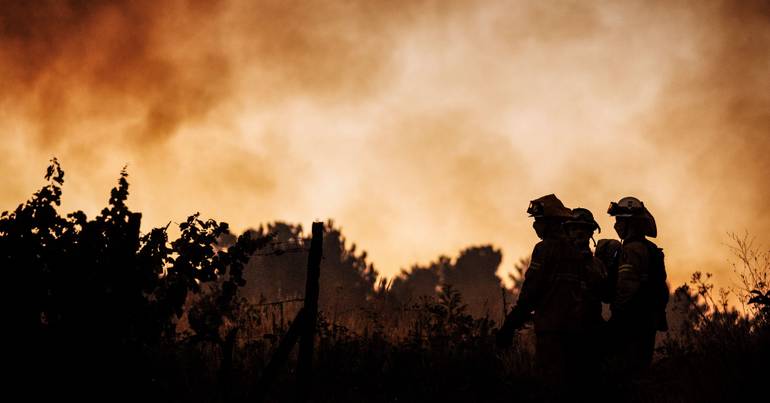

In a state of heightened vigilance, more than 60 municipalities across various districts in Portugal find themselves under a severe fire risk alert. This advisory comes from the Portuguese Institute of the Sea and Atmosphere (IPMA), highlighting the urgent need for awareness and precautionary measures in these affected areas.
Among the districts under maximum fire danger are Bragança, Viseu, Guarda, Porto, Coimbra, Leiria, Santarém, Castelo Branco, and Portalegre. This weather-induced alert is not uncommon for the region during this time of year, as the warm summer months often bring new challenges related to landscape management and public safety.
The IPMA identifies that a combination of dry conditions, high temperatures, and occasional wind gusts enhances the potential for wildfire occurrences. Such environmental factors create ideal conditions for fires to spark and spread, particularly in rural and forested areas. In light of these warnings, it becomes increasingly important for local communities and visitors to practice caution and adhere to any safety guidelines set forth by local authorities.
Integration and coordination among different sectors play a crucial role in managing these natural risks. Emergency services, municipal administrations, and environmental agencies have been actively working to reduce the immediate threat through various preemptive measures. These include increasing ground patrolling and monitoring activities, deploying additional firefighting resources, and ensuring that communications are clear and accessible to all residents within the affected districts.
Local residents are strongly advised to stay informed about the evolving situation by monitoring official channels for updates. It is crucial to remain vigilant by reporting any suspicious smoke or fire activity to authorities immediately. Simple preventive actions, such as avoiding the use of fire in outdoor spaces and ensuring that cigarette butts are fully extinguished, can significantly reduce the likelihood of accidental fires.
Another aspect of fire risk management includes the effective use of technology. Recent advancements allow for real-time satellite imaging and data analysis, which help forecast fire hazards with greater accuracy. These tools have been invaluable in supporting both strategic planning and on-the-ground responses. With continuous technological support and community involvement, Portugal can cultivate resilience against fire threats.
Educational initiatives targeting fire safety awareness are also being emphasized during this period. Schools, community centers, and local media outlets serve as conduits for spreading key information regarding appropriate responses to fire emergencies. These efforts aim to empower communities with knowledge and skills necessary to act decisively when faced with a fire hazard.
Despite the challenges, there is a concerted effort across all levels of society to foster a proactive approach in safeguarding people and properties. Emphasizing collaboration and mutual support, governmental and non-governmental organizations remain steadfast in their commitment to mitigating fire risks and protecting Portugal’s natural environment.
Furthermore, the cultural and historical significance of the regions at risk prompts an even greater impetus for preservation efforts. Rural traditions and natural landscapes form a crucial part of Portugal’s heritage, underscoring the importance of maintaining natural resilience and promoting sustainable practices.
As these districts navigate the peak of fire season, the shared responsibility among communities serves as a testament to human solidarity and environmental stewardship. Through mindful actions and informed perspectives, Portugal aims to turn this season of risk into an opportunity for growth and unity. In the face of adversity, the collective spirit of vigilance and cooperation remains unwavering, paving the way for a safer and more sustainable future.
Source: {link}
